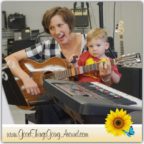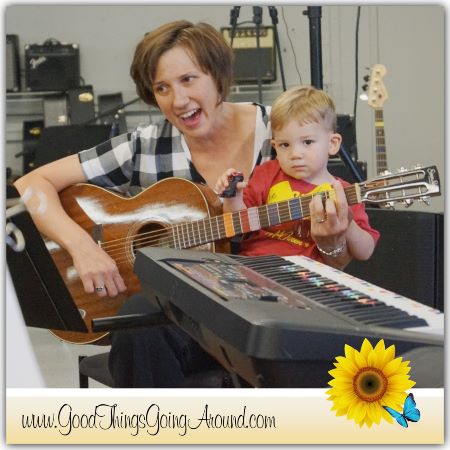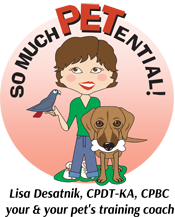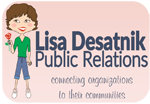inclusion in Cincinnati
Finding Similarities Through Melodic Connections
Written by Sue Schindler
It was the third Tuesday of the month as I walked into the Melodic Connections studio at 6940 Plainfield Road in Silverton for their 5:30-7:00 PM Common Time community event. Common Time is the brainchild of Executive Director Betsey Zenk Nuseibh, to bring communities together through music.
Recently inducted into the University of Cincinnati’s College Conservatory of Music (CCM) as 2019 Distinguished Alumni of the year, Betsy is first and foremost a “disrupter” in music and community relations. It showed throughout the evening. Common Time is the culmination of years of “seeing what works” and taking the leap of faith. No one does this better than Betsey. She has the instincts to bring out the best in others as their spirits and confidence shines through.
Having high enthusiasm and anticipation, I wrote down my required purpose for the evening, “Blog Writer.” Purposes are shared at the beginning of the session to begin the overall connections and clearer understanding of each other. Per their website: “When we express ourselves with intentionality, we know we will arrive at a place that is better than before.”
Lynn Migliara, Melodic Connections development director welcomed me, as I entered the huge music studio that easily seats 60 musicians. I was one of the first to sit in a circle that was in the shape of a snail’s shell. It was filled with chairs; music stands and a variety of instruments. Lynn explained that this set-up ensures that everyone is included.
At these events, each member is a “musician.” Instrument selections range from guitars, keyboards, and a variety of percussion instruments. Percussion includes tambourines, hand bells, and egg-shaped shakers to snare & bass drums, to the more exotic: bongos, cabasas, conga drums and drums that mimic the sounds of the rainforests. Musicians are welcome to keep or change instruments as they desire. Those with vocal chops are encouraged to use microphones for singing. The night I attended (just as at each event) we played and sang at our level of expertise.
Lynn eagerly shared that Common Time welcomed Cincinnati Symphonic Orchestra members to one of their first events. Melodic Connections also offers weekly Common Time to Roll Hill Elementary in Fairmount, to increase relationships between its students and their parents as they learn to play guitar, keyboards and drum.
Through 15+ years of professional and personal contact with Betsey, I knew that night would be special. Betsey offered a warm welcome and shouted out 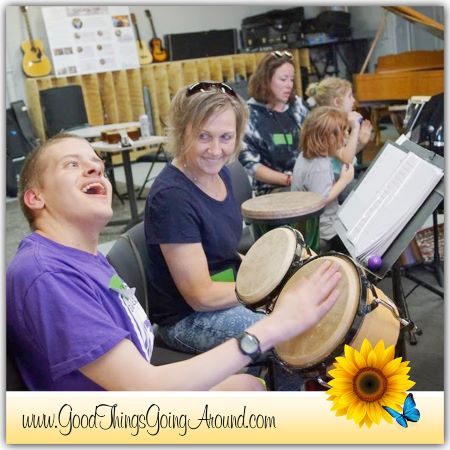 our purposes for attending. Most wanted to make music and jam. Betsey introduced Common Time’s local musician of the evening, Jim Pelz, who sat in the center of the circle. Jim is a country-rock songwriter and performer who, when he’s not playing solo or with his band, Hickory Robot, sits in other local bands.
our purposes for attending. Most wanted to make music and jam. Betsey introduced Common Time’s local musician of the evening, Jim Pelz, who sat in the center of the circle. Jim is a country-rock songwriter and performer who, when he’s not playing solo or with his band, Hickory Robot, sits in other local bands.
Lynn explained that each Common Time Musician of the Month goes through specialized training with Melodic Connections certified music therapists. As the purpose of the evening is community bonding first and foremost, music is fun but not perfect. Per website, “Music is the journey and not a destination.”
As Jim called out our first song, we grabbed our instruments, and were off to a robust start. The positive energy increased throughout the evening especially as more musicians, from young children to older adults, join the circle. Keeping up with finding the songs in the music book was challenging to me, as we covered a wealth of music of different styles and eras. Music ranged from the Beatles’, “Hey Jude,” to the Grateful Dead’s, “Ripple,” to Johnny Cash’s, “Folsom Prison Blues.”
Halfway through, we broke into circles of three. Betsey encouraged us to meet someone new during this time. We talked about what the event’s experience meant to us. My group was the exception of four as a young woman said that she was interested in meeting the musician sitting next to me. She liked his sporty red wheelchair and wanted to know more about him. He smiled and the two continued to talk. Everyone was having so much fun getting to know one another that there was hesitation with going back into the big group. Amy staid next to her new friend as we sang, “Don’t Worry, Be Happy.”
The History
Melodic Connections, a 501(c3) has provided community musical experiences for more than 2000 individuals in special education classrooms, adult programs, after school classes, summer camps and through off-site partnerships. As a former high school music teacher and music therapist, Betsey started Melodic Connections in 2008 after recognizing that students with disabilities can learn best when provided with alternative supports and teaching methods. Not only does Betsey and her staff of 12 certified music therapists provide community opportunities for her musicians, but she is now connecting the community to the Melodic Connections family through Common Time.
My history with Betsey goes back into early 2000, when she was a Cincinnati Public high school music teacher. As a case worker, we shared a special needs student who has Autism, whose parents tried to home school. Attending this middle & high school was his introduction into public education and a culture shock from being in his small home. This teen was frightened and struggled with focus and learning until Betsey came into the picture. Staff marveled with how easily this music teacher included the teen with the other high school students through playing percussion. Betsey’s skills and attention provided him with first step in focusing and gaining the social and educational skills that he desperately needed.
Throughout our daily lives, we are so involved with our own reactions or insecurities in knowing how to reach out to others that we don’t take the time or effort to know one another. Common Time reinforces that cultural, language, abilities, lifestyles, and/or personal experiences are to be celebrated. On that night, I saw and felt us as “one” group without labels or differences. We were alike in sharing common ground in music and our communications. As time ended, Betsey asked for evening observations. The group comments were, “Joy,” “Happiness,” “Friends,” and “Fun”. As I walked away still talking to others, I knew that I am a better person for this experience. I will return.
Everyone is welcome to join Melodic Connections studio on Tuesday, June 18, 2019 for the next Common Time with local musician, Dan Van Vechten, 9440 Plainfield Road, Cincinnati 45236.
Please visit Melodic Connection’s website for additional information on Common Time, classes and summer opportunities.

A Voice For Accessibility
I first met Heather Sturgill in Cincinnati City Hall last year at a historic event. Cincinnati City Council’s Education and Entrepreneurship Committee heard testimonies on the importance of disability inclusion in hiring practices and accessibility of new and renovated buildings. One-by-one individuals moved forward, sharing personal stories, giving statistics, talking of basic human rights and shared humanity, being an advocate for themselves and for others, and collectively telling the world that ALL people deserve equal rights to participate, to contribute, to live and work and play.
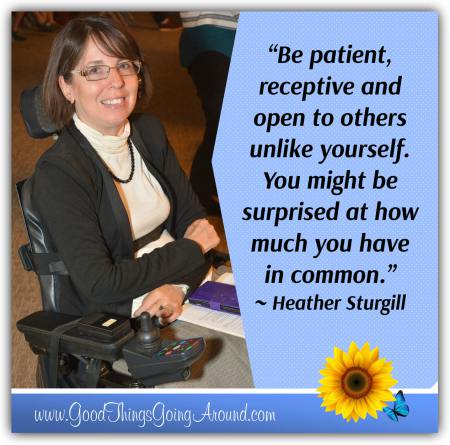 The message was loud and clear – inclusion is not only about one person. It is about US. It is about strengthening communities, workplaces, schools and places of faith, and the economy.
The message was loud and clear – inclusion is not only about one person. It is about US. It is about strengthening communities, workplaces, schools and places of faith, and the economy.
Since graduating the University of Cincinnati with a bachelor’s degree in urban studies and a master’s degree in community planning, Heather has been a voice heard often around town when it comes to making our region more livable for everyone. She is owner/consultant of JOVIS, a company that addresses barriers to community living.
Her list of engagement and accomplishments is lengthy. Though recently concluding her term on the Board of Apple Street Market, she is still extremely active in the efforts towards creating a viable model for grocery stores in neighborhoods that will increase access to fresh foods, provide family sustaining jobs, and serve as a catalyst for neighborhood revitalization. Prior to that she encouraged citizens to become active in their neighborhood organizations when she served on the Executive Board of Citizens for Civic Renewal. She has also served on the Northside Community Council and was chair of the Northside Comprehensive Land Use Plan Update, a project intended to establish the direction of Northside development (economic, housing, recreational and educational) for at least the next 10 years. Always an advocate for the disadvantaged, early in her adult life she was a founding Board member of the Independent Cosmetologists and Barbers’ Association, an organization that protected the professional interests of independent business owners in an industry politically dominated by corporate interests.
Heather was recently elected president of Housing Opportunities Made Equal (HOME) where she hopes to further fair housing and encourage the creation of more economically integrated, affordable and accessible housing in the region. As a member of the University Center for Excellence in Developmental Disabilities Education (UCEDD) Community Advisory Committee she helps them create and direct their resources in the areas of education, research and service to meet the needs of people with developmental disabilities. Heather also is the newly elected chair of Cincinnati Accessibility Board of Advisors where she works with city administration on efforts to improve accessibility to goods, services, and economic opportunity for persons with disabilities. And, as if that wasn’t enough, Heather also serves on the Core Committee of Home Think Tank where she enjoys the opportunity to find, explore and share creative housing solutions for people with disabilities.
She shares her passion right up front in her LinkedIn profile. “My personal background has fostered a higher level of awareness of the benefits of diversity to everyone in a community. I fully recognize that in order to build the bridges of communication and true dialogue it is important to identify and have an appreciation for other people’s views. In these economically challenged times it is necessary to think outside the box and encourage an environment of innovation, recognizing that everyone is important and that some amazing ideas can come from the most unexpected places.”
So, where does this drive come from? Why has Heather devoted her professional career and personal life toward removing barriers for people and neighborhoods?
For the answer to that, we must go back to April 15, 2000. That was a fateful date that would forever change the course of her life. An accident that nearly took her life, left her without use of her legs, her trunk, her arms, hands and fingers. While in the hospital, her lungs kept filling with fluid and she was not even able to call a nurse. Her husband, who spent every night of that three-month stay with her, saved her life.
Released three month later, Heather returned to their home – an old, shotgun-style house that was three rooms deep and three stories high. Her husband rigged up a ramp but, “It was incredibly difficult for people to help me in and out. It was just ssssoooooo incredibly scary,” she told UC’s Mary Reilly.
Lisa: With all that you have been involved with, please talk about an accomplishment, its impact and why it is important to you?
Heather: Though I’ve helped a couple cities make their zoning codes friendlier to developers that want to make projects more accessible, it doesn’t matter unless the developers want to take advantage of the new opportunities. If you don’t have the conversations with developers in a way that gets them excited, then the tool, or opportunity languishes unused. Because of this, I take every opportunity to communicate ideas and information with as many people as possible; with differing backgrounds, economic status, beliefs, ethnicities, industries, etc.
So, when Doug Hinger of D-Haus or TJ Ackerman of Hearth Home tell me they are changing their product lines/designs and will, at the minimum, be building to visitable standards, and tell me that the decision was because of conversations with me…I get supper excited!
But, I don’t want to discount how fabulous it feels to see someone’s face light up because you helped them navigate frustrating bureaucracy and get a permit, or successfully fight a fine, or get access to transportation.
Lisa: What can people do on a personal level to be more inclusive?
Heather: Be patient, receptive and open to others unlike yourself. You might be surprised at how much you have in common.
When someone asks you “Can this ______________ be done?” or “Can I ____________?” Always try to think of “yes” first, followed by brainstorming alone, or with others, on the ways to reach the goal. And, try to be goal oriented when determining requirements. For example, think about how some job requirements are written. Which is more open to creative solutions: “Must have a valid drivers license”, or “Must be able to attend meetings away from the office and possibly during non-traditional work hours.” The second one allows for creative solutions like the applicant using public transportation, taxis, walking, biking, friends, or ride share like Uber and Lyft.

